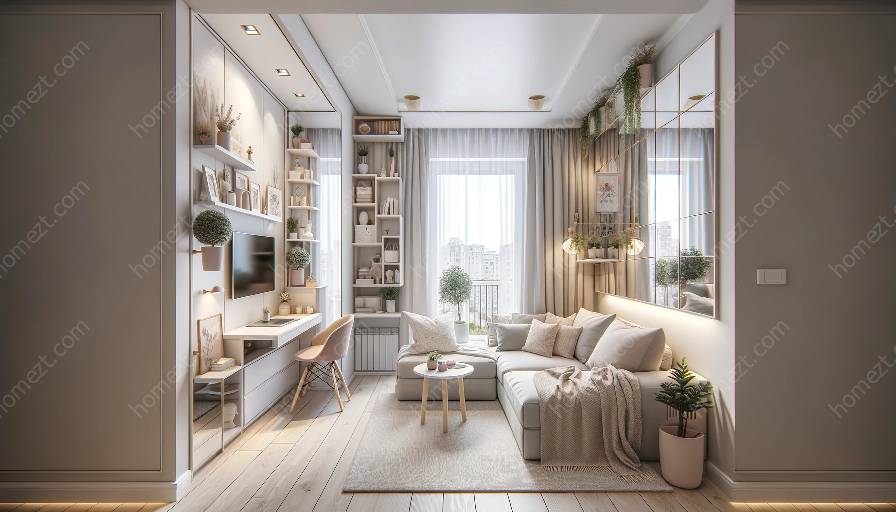Introduction
Color is a powerful tool in interior design, impacting the way we perceive and experience space. In small spaces, the choice of color schemes becomes even more crucial as it can greatly influence the feeling of spaciousness and openness. Understanding the psychological and visual effects of color schemes in interior design is essential for creating a harmonious and visually appealing environment. This article will explore how color schemes affect the perception of space in interior design, especially in small spaces, and provide practical tips for utilizing color to maximize space while decorating.
Understanding Color Theory
Color theory forms the foundation for understanding how color schemes can impact the perception of space. In interior design, colors are divided into three primary categories: warm, cool, and neutral. Warm colors such as red, orange, and yellow are known to advance visually, creating a sense of intimacy and coziness. Cool colors, including blue, green, and purple, have a visually receding effect, making spaces appear larger and more open. Neutral colors like white, gray, and beige provide a versatile backdrop for other colors and can be used to balance and complement warm and cool tones.
The Impact of Color Schemes on Small Spaces
In small interior spaces, the selection of color schemes can significantly influence the perceived size of the room. Light and cool colors, such as pale blues, soft greens, and pastel hues, can visually expand the space, making it feel more airy and open. Conversely, dark and warm colors, like deep reds, rich browns, and dark yellows, can create a sense of warmth and intimacy but may make the space feel more constricted. It's essential to consider the natural light available in the room, as well as the overall desired atmosphere, when choosing a color scheme for a small space.
Practical Tips for Utilizing Color in Small Spaces
1. Light-colored Walls: Painting walls in light, neutral tones can create the illusion of spaciousness. White walls, in particular, can reflect light and make the room feel larger and brighter.
2. Strategic Use of Accent Colors: Introducing pops of bright accent colors in a predominantly neutral space can add visual interest without overwhelming the room. This can be achieved through accessories, artwork, or small pieces of furniture.
3. Monochromatic Color Schemes: Using variations of the same color throughout the space creates a sense of continuity, visually expanding the room. For example, using different shades of blue in a small room can create a cohesive and expansive feel.
4. Light-Reflective Surfaces: Incorporating reflective surfaces such as mirrors, glass, and metallic accents can bounce light around the room, enhancing the feeling of openness.
Creating the Illusion of Depth: Using graduated shades of the same color from floor to ceiling can create a sense of depth, making the space feel more expansive.
Conclusion
Color schemes play a vital role in the perception of space in interior design, especially in small spaces. By understanding the principles of color theory and employing practical tips for utilizing color, interior designers can create visually appealing environments that maximize the perceived size of a room. Whether it's through the use of light-colored walls, strategic accent colors, or monochromatic schemes, color has the power to transform the perception of space in interior design, ultimately contributing to a more comfortable and aesthetically pleasing living environment.






































